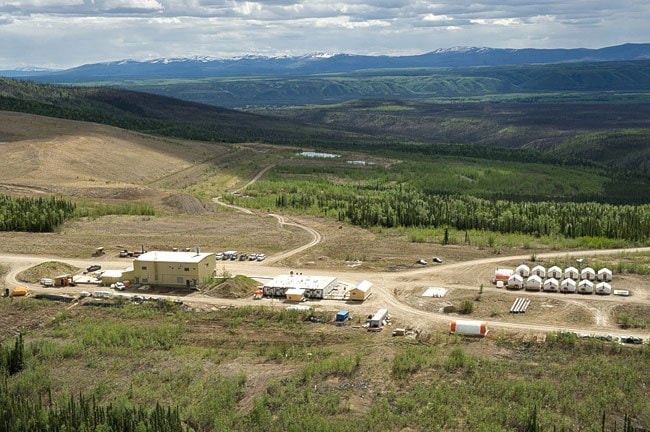Golden Predator Corporation caused a stir earlier this year when it cleaned out the Yukon Mining Recorder’s office of staking tags.
Now we know where the Vancouver-based company put a good chunk of them to use.
It’s staked the entire Livingstone Creek district near Whitehorse, making 7,200 claims over an area that covers 1,500 square kilometres.
The area is second only to the Klondike as a source of placer gold, said CEO William Sheriff. Yet it hasn’t attracted much interest from miners to date in the Yukon’s modern gold rush.
“Quite frankly, it’s a place that’s been overlooked. There’s been staking activity everywhere else in the territory, but they’ve kind of bypassed that area. And, with its relatively rich history of placer mining, that’s kind of surprising.”
Creeks within the district have reported production of over 50,000 ounces of placer gold since 1900, according to the company. That includes spectacular, “fist-sized” nuggets, said Sheriff.
Glaciers once covered Livingstone, and conventional wisdom holds that these ice sheets scraped away the motherlode, leaving only traces in the creek beds. Golden Predator is betting this standing theory is wrong.
“I think that’s been reasonably well refuted in the Dawson area,” said Sheriff. “Glaciers moved it around, but you don’t get the kind of gold they’ve got moving very far. It’s near its source.”
The Yukon Geological Survey released new data earlier this year that suggested the district had promising geology for hardrock gold, said Sheriff.
Golden Predator is in an enviable position to act on such data, having recently scooped up the survey’s former chief geologist, Mike Burke, to help run their operations.
But the company’s interest in Livingstone predates both the hiring of Burke and the latest tantalizing data, said Sheriff.
“It was the first place Golden Predator had a claim, when we first came up three years ago.”
It helps that Livingstone is less remote than many of the territory’s hotbeds of mining. The company’s claims are located between 45 and 140 kilometres northeast of Whitehorse.
Livingstone is accessible by a winter road from Lake Laberge, but much of Golden Predator’s work will be done sufficiently far away to require helicopter support.
The company’s focused this season on sampling the area’s soils and stream sediments. Drill work likely won’t begin until the summer of 2013, said Sheriff.
Miners have sought shiny metal at Livingstone Creek since the original Klondike Gold Rush. By the turn of the 20th century, Livingstone’s population reached as high as 100 people, and the camp boasted four roadhouses and an RCMP post, according to historian Michael Gates.
Golden Predator’s flagship property is Brewery Creek, south of Dawson City. The company envisions itself opening the territory’s next gold mine at the property.
To do so, it will need to beat Victoria Gold Corporation’s plans to open its Eagle mine near Mayo by 2014.
Golden Predator hasn’t yet submitted a project proposal to the Yukon Environmental and Socio-economic Assessment Board. But it already has many permits in place to operate on parts of the property, from when previous owners operated an open-pit, heap-leach gold mine from 1997 to 2001.
Since 2009, Golden Predator has been poking holes in the ground surrounding the existing mine site to shore up its suspicion that there’s more yellow metal near the surface.
And Golden Predator has many other properties, spread from the Selwyn Basin near the Northwest Territories border, to areas north of Dawson City near the Alaskan border.
The company says it now controls more mineral claims than anyone else in the Yukon.
In all, Golden Predator has staked 5,700 square kilometres in the territory. That’s a swath of land bigger than Prince Edward Island.
The company spent $15.5 million on exploration in the territory last year. This year’s exploration budget is $20 million. And next year’s spending is expected to grow even more, said Sheriff.
Golden Predator employs more than 40 workers who live in the Yukon, he said.
And the company’s exploration work is focused exclusively in the Yukon, although it receives close to $1 million annually from royalties and lease payments in Nevada.
The CEO claims he has no interest of following the typical path of a mining junior, which is to work up a claim sufficiently enough to persuade a major gold producer to buy it out. Sheriff says he wants to see the company grow and remain in the Yukon.
“We plan on being around for a long time.”
Contact John Thompson at
johnt@yukon-news.com.
